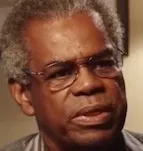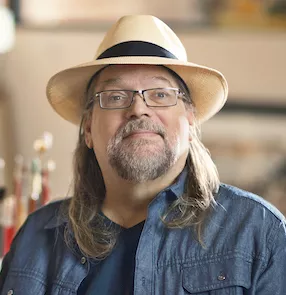Patient Stories
Patient: Gloria & Veronica Ramos
When Gloria Ramos received the call in August 2000 that UCSF Medical Center had a liver for the transplant she badly needed, the Ramos family drove to the hospital with great anticipation and excitement. But further testing of the available organ revealed it wasn't a good match for Gloria and her daughters and husband expressed their disappointment.
"This only means that I'm at the top of the list," Gloria recalls assuring her family. "I'll get called again!"
Gloria contracted Hepatitis C through a blood transfusion in 1982 but the deadly virus lived undetected in her body until the summer of 1997 when she went to the doctor to find out why her stomach appeared so bloated. By that time, the disease had
...Read Full Story

Patient: Bicknell Ramsay
Bicknell Ramsay — a 74-year-old retired engineer who lives a fully active life — was concerned that a wound on his foot would not heal. Having volunteered for a clinical study on peripheral artery disease (PAD), he described the wound to the principal investigator, UCSF nurse practitioner Roberta Oka, R.N., DNSc. She referred Ramsay to Michael S. Conte, M.D., (pictured at right on left), Chief of Vascular and Endovascular Surgery at UCSF Medical Center.By then, the wound exceeded two centimeters and was enlarging. After an ankle-brachial index test found only 30 percent of normal perfusion in Ramsay's legs, Conte suspected limb-threatening ischemia — and worse. "He didn't have any of the traditional risk factors, but he was describing episodes
...Read Full Story

Patient: John Maduell
In his 33-year career as a conceptual artist at Lawrence Livermore National Laboratory, John Maduell illustrated futuristic technologies few others could imagine. But he never envisioned the toll diabetes and vascular disease would take on his body—or that one day he might lose his legs because of these problems.
Maduell's troubles started two years ago when he developed a diabetic ulcer on his left foot.
"Before I knew it, I was in the hospital, with three toes amputated," he says. Still, the wound didn't heal, and Maduell, who now lives and paints in Modesto, was told removing the entire leg was his only option.
Instead, he sought help at UCSF's Center for Limb Preservation, which brings together podiatrists
...Read Full Story
Patient: Marla Levy
My name is Marla Levy and I owe my life to Dr. Scot Merrick, Chief of Adult Cardiothoracic Surgery at UCSF.
My story begins in Southern California when I was 21 and diagnosed with a congenital heart defect: supravalvular aortic stenosis or SVAS.
SVAS develops before birth and causes narrowing of the aorta, the large blood vessel that carries blood from the heart to the rest of the body.
At age 27, I had my first open heart surgery. My aorta was replaced with a human valve, and when doctors couldn’t get my heart to start after the procedure, I received an emergency right coronary bypass. What should have been a three hour surgery turned into an eight hour
...Read Full Story
Patient: Alyssa Welch
.st0{fill:none;stroke:#FEB80A;stroke-width:5;stroke-miterlimit:10;}
.st0{fill:none;stroke:#FEB80A;stroke-width:5;stroke-miterlimit:10;}
My name is Kim Welch, and my daughter Alyssa’s story is one of hope and survival. She was born 15 years ago with autosomal recessive polycystic kidney disease (ARPKD). ARPKD causes severe damage to both your kidney and liver. Alyssa was two and a half years old when she had her first kidney transplant.Ten days after her successful kidney transplant, unrelated to her congenital disease, Alyssa was diagnosed with eye cancer. Her left eye was surgically removed and replaced with an artificial one. Time marched on and so did Alyssa’s strong will and positive attitude.Last year around Alyssa’s 14th birthday we learned she needed two transplants — a kidney and a liver. We decided on University
...Read Full Story
